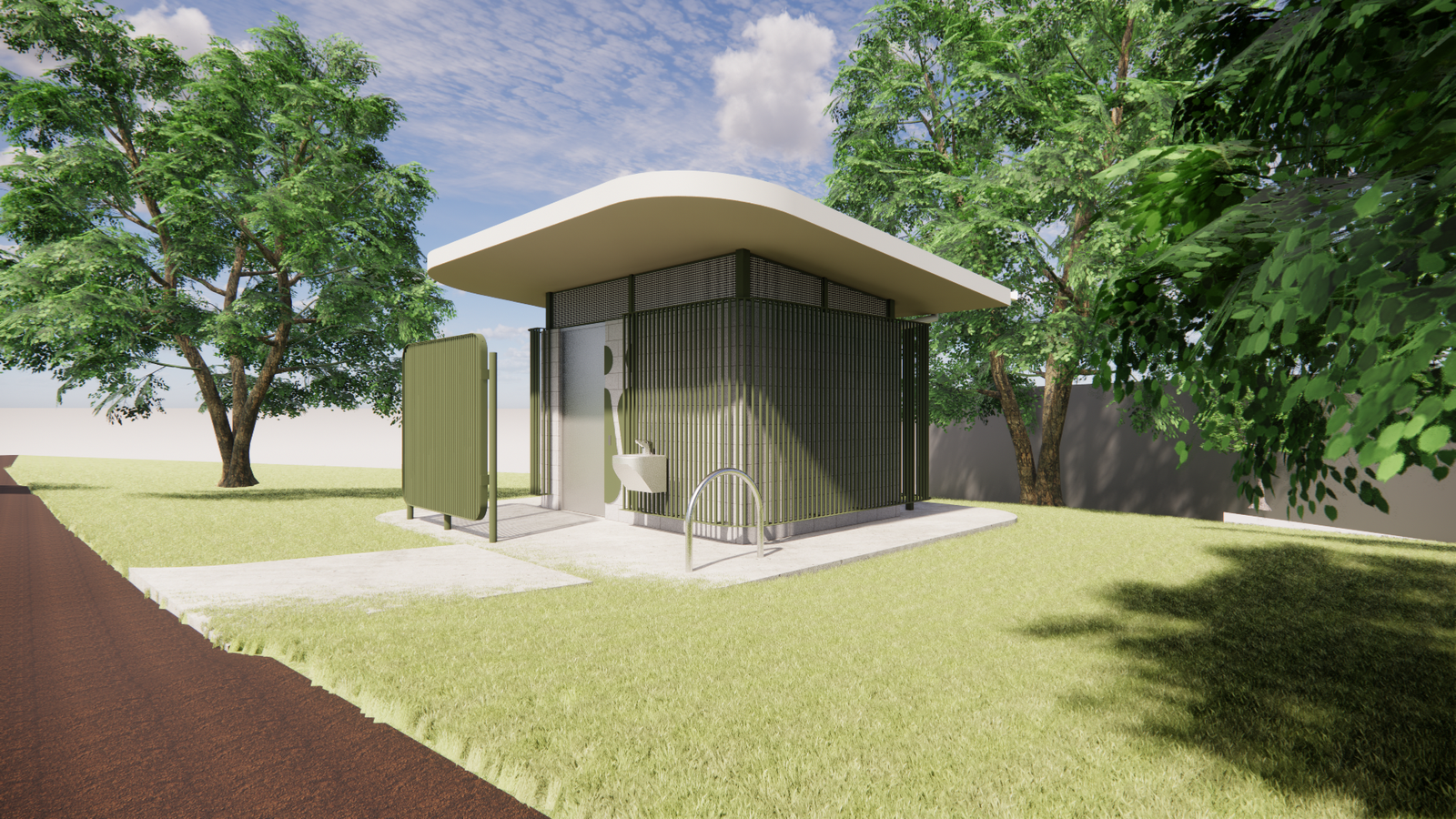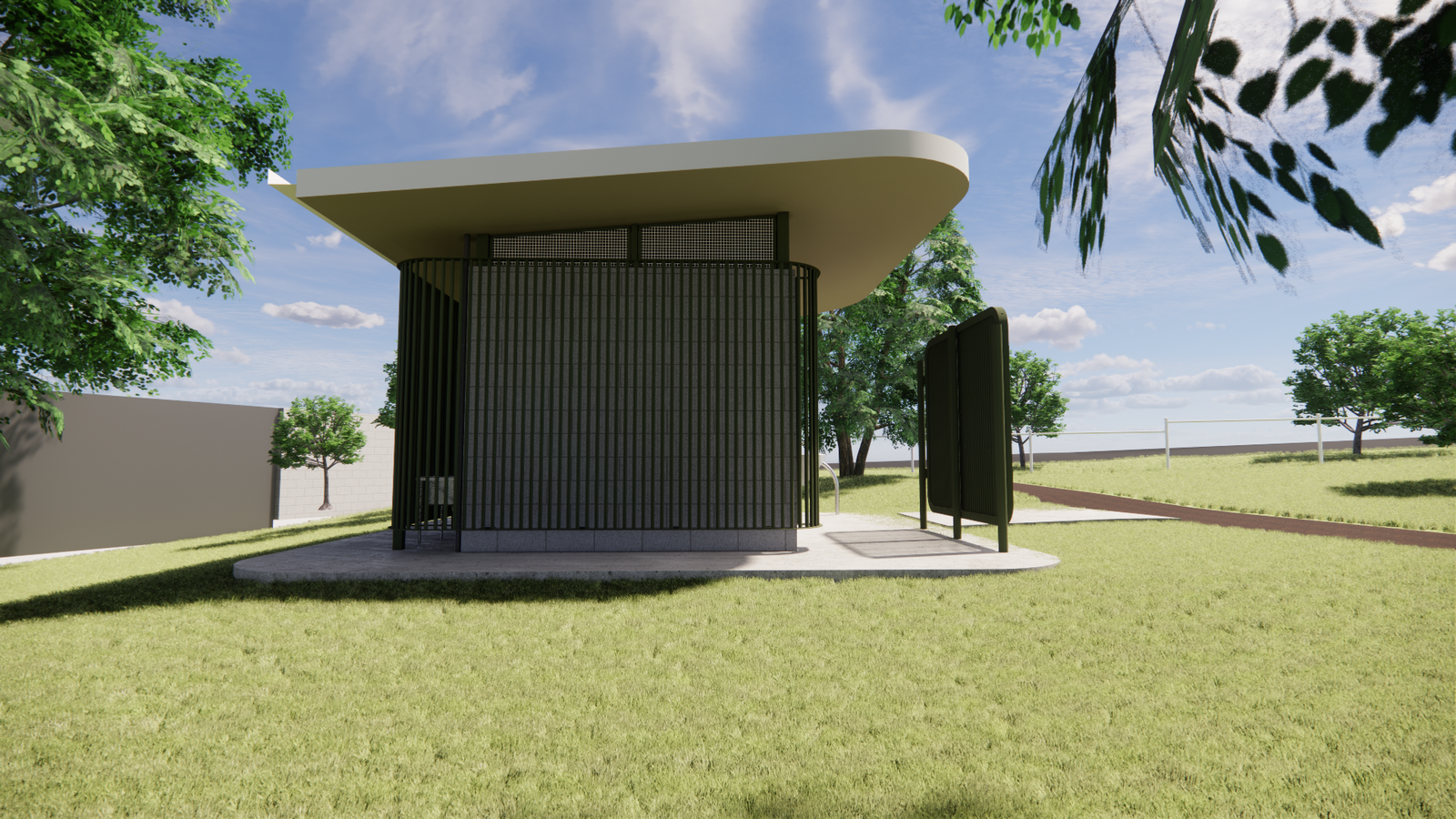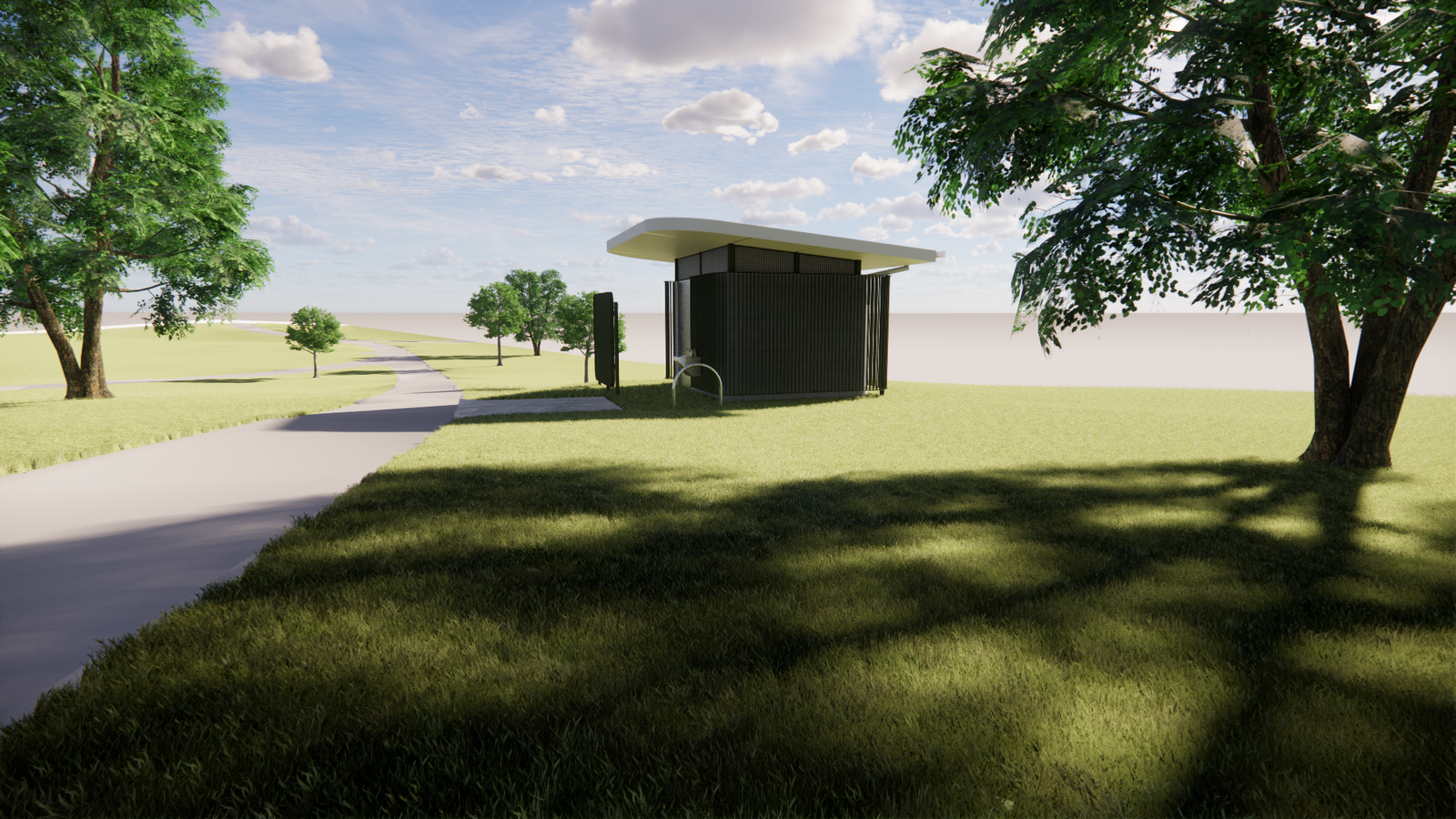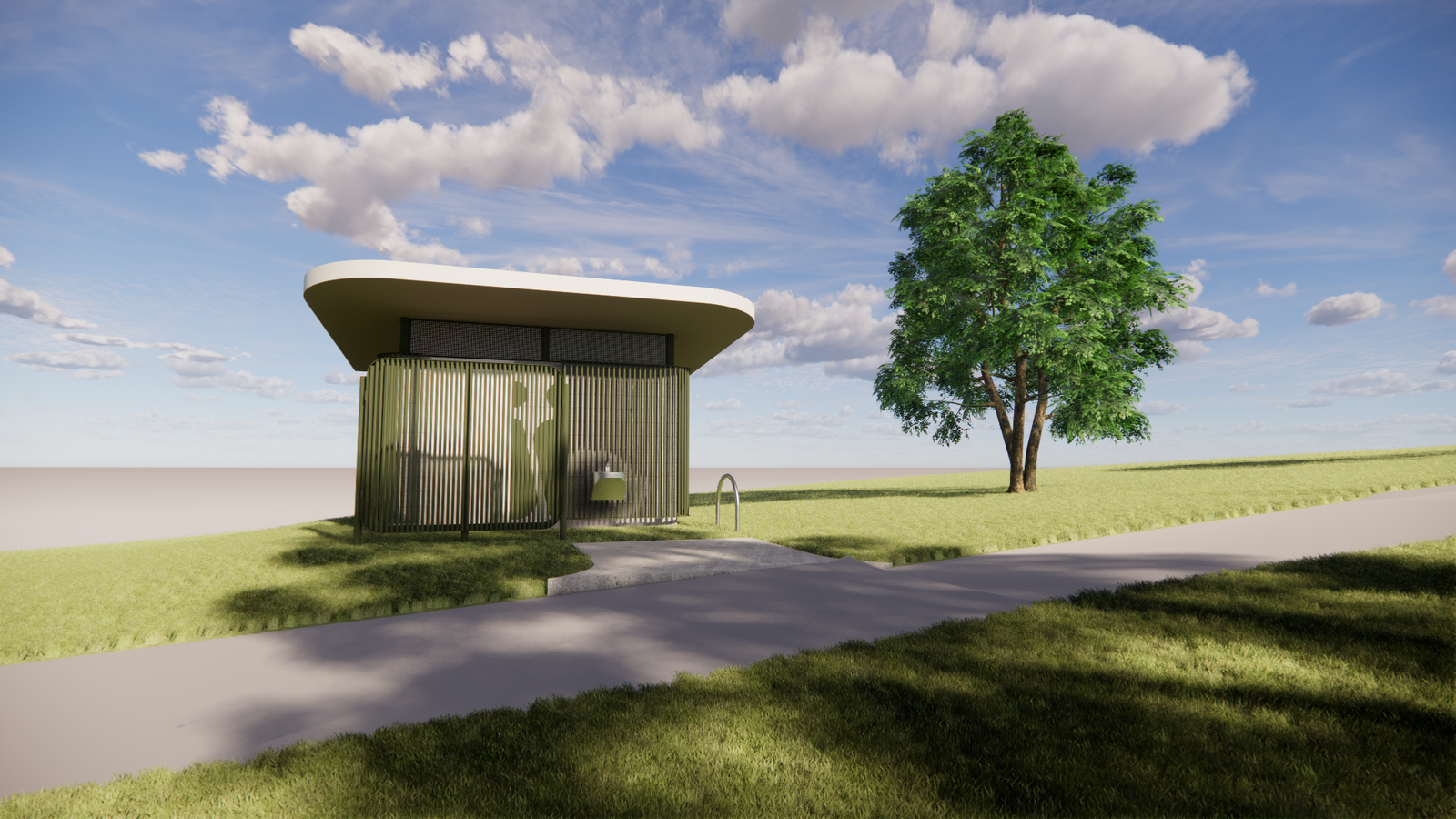Where will the toilets be┃ View the design ┃ Other information ┃ Previous community consultation ┃ Contact us
Community consultation has now closed
Thank you to everyone who shared their feedback.
What we're proposing
We’re proposing to build a public toilet at Eglinton Reserve in Kew and Fordham Gardens in Camberwell.
We chose these parks based on community feedback from the Public Toilet Strategy consultation and Boroondara Community Plan consultation. These parks have been prioritised because:
- the area is popular with families, children, cyclists, dog walkers and visitors
- toilets would support longer visits to playgrounds, BBQs and events
- it would improve access for older people and those with special needs
- the nearest toilet is about a 5-minute walk away.
Where will the toilets be built in the parks?
The new toilet will be built in one carefully chosen area within each park. It was selected to balance a number of factors:
- location of underground infrastructure like water or sewer pipes
- protecting nearby trees
- located outside flood-prone areas
- easily visible from playgrounds, picnic areas, and other park facilities.
We also want to maintain as much large open space for everyone to enjoy, which means only certain areas are suitable. Read our FAQs section to find out more.
Eglinton Reserve, Kew

Fordham Gardens, Camberwell
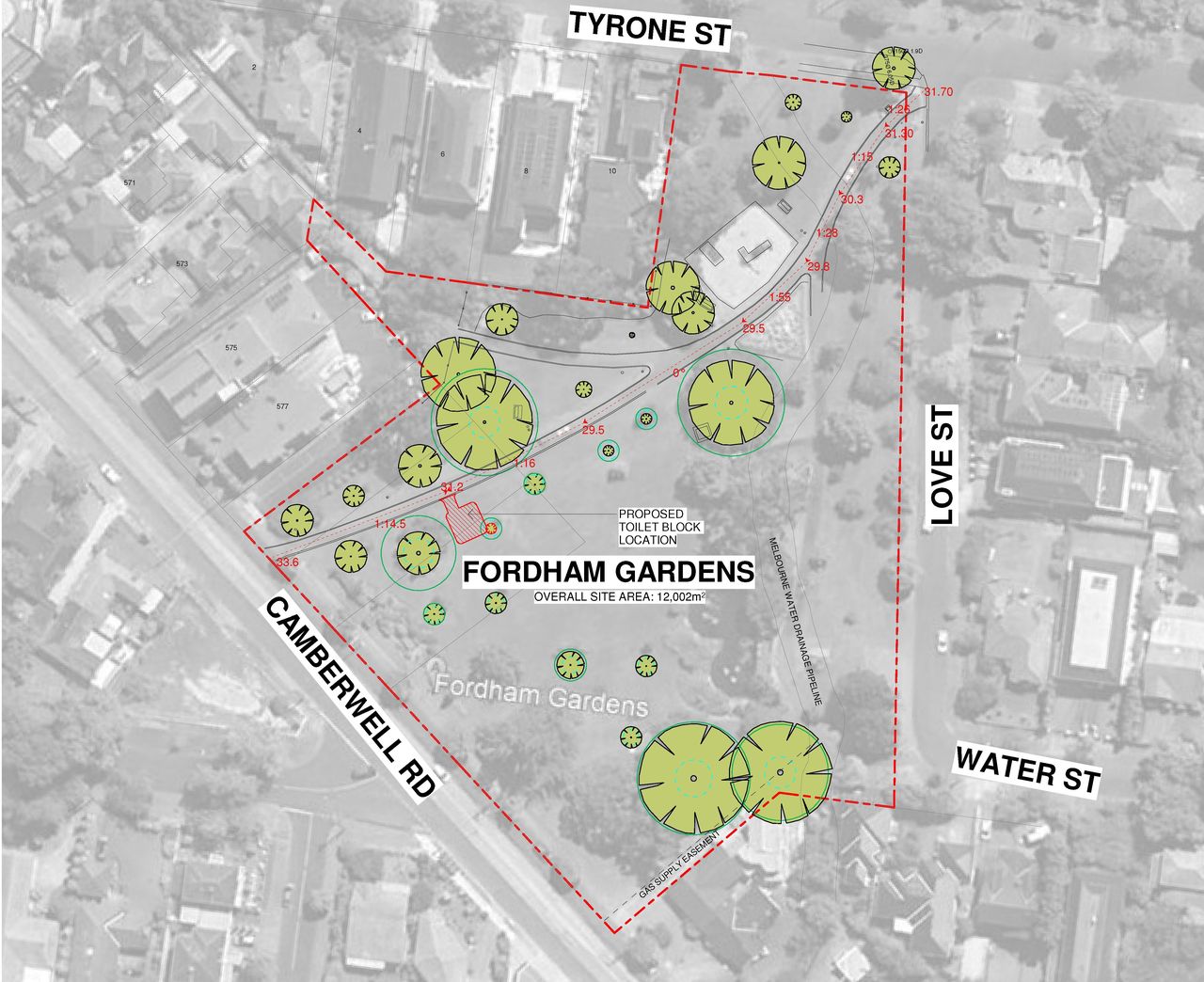
New designs
When we consulted on the Public Toilet Strategy, the community told us they want something that feels more welcoming, safer, and better suited to local parks. That’s why the new toilets will be locally designed to fit the character of each park and the needs of the people who use them.
The new toilet will have one cubicle, which blends into the natural surroundings with its green and cream colours. The new design aims to help people feel safe when approaching and using the facility.
The toilets are designed to be inclusive and easy to use for everyone. Features include:
- accessible fixtures and sizing to fit prams and wheelchairs, including wider doors
- baby change facilities
- grab rails to support older people and people with disabilities
- gender-inclusive facilities
- a privacy screen
- outdoor sink for handwashing without entering the toilet (useful for parents or people using the barbeque)
- soap dispenser and air-dryer
- sanitary bins for sanitary products, incontinence products and nappies
- sharps containers
- a bike rack
- a lower mirror and basin
- hooks and shelves to hold bags and coats.
Other information about the new toilets
Some decisions about the toilet's design approach were made when the Public Toilet Strategy was adopted. We’re not seeking feedback on these elements, but the information below will help you understand what’s being proposed.
The public toilets at these parks will be open from:
- 6 am to 7 pm – 1 April to 31 October
- 6 am to 9 pm – 1 November to 31 March.
It will automatically lock at all other times.
The new toilet will be cleaned at least once a day, and checked for things like toilet paper, cleanliness and general upkeep. It will also be deep cleaned once a week. Any issues such as blocked toilets or broken fixtures will be reported to us by our contractors straight away.
There will be lighting both inside and outside of the public toilet.
We’re using Crime Prevention Through Environmental Design (CPTED) principles to guide our design. This means we’ll place toilets where they are visible from surrounding areas, facing busy paths, and keeping the surroundings open with no hiding spots or obstructions.
FAQs
About the Public Toilet Strategy
Over the next 10 years, our strategy will guide the planning, management and improvements to 62 Council-owned toilets in Boroondara. Visit our website's Near Me page to see these locations.
We’re committed to making them:
- Cleaner and well-maintained –with improved cleaning and regular maintenance checks.
- Inclusive and accessible – gender-inclusive, safer, and easier for everyone to use.
- Easier to find – with clearer signage and visible opening hours.
- More available – adding toilets at up to 15 new and existing locations, and upgrading 11 existing facilities
We started working on the new strategy in response to community feedback we received when we developed Boroondara’s Asset Plan 2022-23 to 2023-24.
The Public Toilet Strategy was adopted by Councillors on 11 August 2025.
Community consultation: November 2023 – February 2024
Thank you to everyone who shared their feedback.
388 people participated in the consultation and provided valuable feedback that has shaped the draft strategy. The community’s insights are summarised below. You can also read the full consultation report (PDF 1.66 MB).
How your feedback shaped the strategy
Your stories and real-life experiences shared during the consultation helped us understand what matters most to the community. We’ve used your insights to shape the final Public Toilet Strategy in the following ways:
1. Cleanliness of public toilets
Many people told us they avoid using public toilets because of concerns about cleanliness and hygiene.
In response, we’ve started a new cleaning contract for public toilets and BBQs. As part of this, cleaners check for maintenance issues during their daily visits and report them so Council can organise repairs quickly. We also carry out regular assessments to make sure our toilets meet the community’s expectations.
To make it even easier to report issues, we’re looking into adding QR codes to each public toilet that link straight to our ‘report an issue’ page.
2. New and upgraded facilities
We’ve heard from the community that finding toilets in busy areas can be a challenge. In response, we’re planning to up to 15 additional public toilets at both new and existing locations over the next 10 years. Previously, only one new toilet was built every 3 to 4 years.
During the Public Toilet Strategy consultation, the community suggested potential locations for new toilets. We’ve narrowed down this list and will check back with the community on the preferred sites before we start construction.
3. Mandatory sanitary bins
Recent research shows that over half of the blockages in Boroondara’s public toilets are caused by nappies, sanitary products, and incontinence items being disposed of incorrectly.
Currently, only 50% of our public toilets have sanitary bins. Under the new strategy, all toilets will include these bins to help promote health, wellbeing and inclusion in the community. The bins will be large enough to hold all these items safely.
4. New designs
We’re planning to build a locally designed public toilet instead of an Exeloo toilet, which can:
- blend into the natural surroundings with its green and cream colours
- provide consistent fixtures
- help people feel safe when approaching and using the facility
- include extra features to suit community needs
- help prevent loitering and vandalism.
Although Exeloo toilets have a self-cleaning feature, our community told us that it doesn’t effectively remove grime and often leaves toilets wet and unsafe. The automated feature also means the toilets aren’t usable for 15 minutes.
95% of the consultation participants live in Boroondara, with residents from each suburb. More women participated (67%) than men (29%).
We heard from all age groups, with the most frequent age group being 40 to 49 years (23%). There was a balanced spread of people in age groups 30 to 39 years, 50 to 59 years, 60 to 69 years, and 70 to 79 years. The youngest participants were aged 10 to 19 years (2%) and the most senior aged 80 to 89 years (2%).
Most people (88%) reported using a Council-owned public toilet within the last 12 months.
The community's experience with Council-owned public toilets is divided.
- 42% report a positive experience. Men were more likely to report having a positive experience. Reasons given for having a positive experience include:
- ease of access (50%)
- cleanliness (33%)
- feeling safe (31%).
- 37% report negative experiences. The reasons given include:
- lack of cleanliness (49%)
- wet facilities (34%)
- lack of supplies (29%).
There were significant differences in experiences for those living with health conditions, with 25% reporting very poor experiences. People living with a disability mostly reported neutral experiences (39%), with no reports of very good experiences.
68% of participants said it was very important to have clean public toilets nearby when choosing which shops or parks to visit. When asked to explain why this is important, people gave their reasons in their own words. The most frequent themes people mentioned were:
- Comfort and convenience: The importance of clean, well-maintained toilets for extended outings and the sense of safety and well-being they provide.
- Ageing population: The necessity for frequent and emergency access for older people to participate in outdoor activities.
- Families with children: The ease of visiting parks and shops without worrying about bathroom access for young children.
- Health and accessibility needs: There was an emphasis on clean and accessible facilities for individuals with disabilities and/or health conditions.
People were asked to select 5 improvements they’d like to see Council make to public toilets across Boroondara. The most highly ranked priorities are:
- Provide more toilets
- Better cleaning and maintenance
- Update/upgrade toilet existing toilets
- Improve the safety/security of public toilets
- Increase the opening hours of public toilets
When asked where new public toilets are needed, the main areas identified were:
- Sports grounds and parks, gardens and reserves (48% of responses)
- Key neighbourhood centres near shops and high streets (37% of responses).
- Women find it very important to have clean public toilets nearby (72%) compared to men (61%).
- The importance of having clean public toilets nearby generally increases with age, with the 50 to 59 age group (82% finding it very important) and the 80 to 89 age group (78% finding it very important) showing the highest concern.
- For people with a health condition, the availability of clean public toilets is considered very important by 80% of respondents. For those living with a disability, 72% reported it being very important.
- When asked about their preference for the style of toilet, traditional toilets were favoured (41%) over automated ones (35%).

